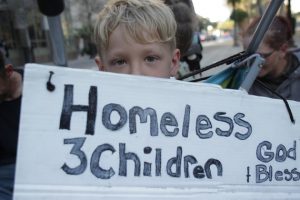Housing First homeless assistance recognizes that people experiencing homelessness – like all people- need the safety and stability of a home in order to best address challenges and pursue opportunities.
The Housing First approach connects people back to a home as quickly as possible. While also providing services that people may need to be stable and secure.
Housing First Assistance
It is a homeless assistance approach that prioritizes providing permanent housing to people experiencing homelessness. Therefore, end their homelessness and act as a foundation for achieving personal goals and enhancing their quality of life. Housing First has a strong belief that people need basic needs. Basic needs such as food and a place to live before coping with less critical issues. Such issues as getting a job, budgeting properly. Housing First is therefore based on the theory that a client’s preference for housing and support services is important. The practice of this option is likely to make the client more successful in remaining in and improving their lives.
Housing First is an approach that offers permanent, affordable housing as quickly as possible for individuals and families experiencing homelessness, and then provides the supportive services and connections to the community-based supports people need to keep their housing and avoid returning to homelessness. The principles behind this approach are:
- Move people into housing directly from streets and shelters without preconditions of treatment acceptance or compliance.

- The company is obliged to provide comprehensive housing support services. These services are predicated on assertive engagement, not coercion;
- The continued tenancy is not dependent on participation in services;
- Units targeted to most disabled and vulnerable homeless members of the community;
- Embraces harm-reduction approach to addictions rather than mandating abstinence. At the same time, the provider must be prepared to support resident commitment to recovery;
- Residents must have leases and tenant protections under the law;
- It can be implemented as either a project-based or scattered-site model.
How is Housing First different from other approaches?
Housing First does not require people experiencing homelessness to address all their problems. Problems include behavioral health issues or to go through several services and programs before they can obtain housing. Housing First does not mandate participation in services either before obtaining housing or in order to retain housing. The Housing First approach views housing as the foundation for improving life. And enables access to permanent housing without prerequisites or conditions beyond those of a typical renter. Supportive services are provided to support people with housing stability and individual well-being. However, participation is not required as services are more effective when a person chooses to engage. Other approaches do make such requirements for a person to obtain and retain housing.
Does Housing First work?
There is a large and growing amount of evidence demonstrating that Housing First is an effective solution to homelessness. Consumers in a Housing First model access housing faster and are more likely to remain stably housed. This is true for both PSH and rapid re-housing programs. PSH stands for “permanent supportive housing” and is a long-term program provided by the Homeless Services Network of Central Florida. The PSH program combines affordable housing with services that help people who face challenges live with stability, independence, and dignity. PSH has a long-term housing retention rate of up to 98 percent. Studies have shown that rapid re-housing helps people exit homelessness quickly—in one study, an average of two months—and remain housed. Various studies show that between 75% and 91% of households remain housed every year after they are rapidly re-housed.
Late 2014, Mayor Dyer made a commitment to shift 300 chronically homeless and veterans to permanent, supportive housing by 2017. Since they have successfully exceeded that goal.
In early 2017, they announced that they placed 385 chronically homeless individuals into permanent housing. And, across our region, they have placed more than 1300 people into permanent housing. Furthermore, they have been recognized by the White House, the Veterans Administration and the U.S. Interagency Council on Homelessness of effectively ending chronic veterans’ homelessness.
What’s even more encouraging than the numbers themselves is that their housing-first model is working.
Our current homeless situation has lingered for decades. Housing First is working as fast as they can on a final, long-term solution. One that gets the homeless off the streets and into housing with needed supportive services. They are helping the true homeless get off the streets as quickly as the housing and services become available but developing such housing and funding for services does unfortunately take time.
- ‘Housing First’ pilot program a success, says the commission
- Commission ID’d 100 homeless folks, got them housing
- Since implementing, 339 chronically homeless have been housed
Give Smart and Help Create Real Change
We’re proud that Orlando is a compassionate community and recognize that many people give to panhandlers with the best of intentions – because they want to help them meet their everyday needs like clothing, food, and personal hygiene. Unfortunately, this type of giving does not ultimately help the individual get off the streets and into housing. A text message to the “Give Smart” Campaign has launched to help fund crucial services for the chronically homeless, with a goal of getting them into permanent supportive housing.
The next time someone asks you for change, don’t give cash. Give with a smart heart and help create real change by amplifying your gift alongside the donations of others. Text “Give Smart” to 85511.
More extensive studies have been completed on PSH finding that those rehoused reports an increase in perceived levels of autonomy, choice, and control in Housing First programs. A majority of the formerly homeless are found to participate in the optional supportive services provided, is often resulting in greater housing stability. Those who use supportive services are more likely to participate in job training programs, attend school, discontinue substance use, have fewer instances of domestic violence, and spend fewer days hospitalized than those not participating.
What comes after ‘Housing First’?
Viviana Janer, commissioner, Osceola County: Homelessness (especially family homelessness) continues to challenge our region. I am proud of the efforts that have been implemented by Osceola County and our partners to provide permanent supportive housing to 25 chronic homeless individuals and 135 families in one year. In addition, another 113 families and individuals were prevented from being evicted. While Osceola’s strategic plan focuses on the development of affordable housing, we continue to work with our partners on not only housing but also on job readiness, ID services, job placement, domestic-violence prevention and more. While no one person or organization can solve homelessness alone, together we will continue to make strides in eradicating homelessness in Central Florida.
The Leaders Agree
In his plenary speech at the 2019 Solutions for Individual Homeless Adults National Conference in San Diego, Matthew Doherty, Executive Director for the U.S. Interagency Council on Homelessness (USICH) provided a passionate defense of the model:
“We have the opportunity to not waste precious time on endless debates regarding whether Housing First works for ‘this population’ or ‘in this community’ and to resist bogus arguments that a focus on Housing First imposes a one-size-fits-all solution on people or programs. We can speak the real truth that Housing First approaches are the opposite of one-size-fits-all and help ensure that we don’t leave anyone behind.”
He was echoed later in the conference by Housing and Urban Development (HUD) Secretary Ben Carson who stated that “the evidence then and now supports Housing First.”
USICH recently issued a “resource roundup” of some of the best articles, videos, and tools to help communities understand and implement the Housing First model. It is a great place for anyone to start to gain an understanding of the principles and practice of the approach.
Finally, permanent supportive housing has been found to be cost-efficient. Providing access to housing generally results in cost savings for communities because housed people are less likely to use emergency services, including hospitals, jails, and emergency shelter than those who are homeless. One study found an average cost saving on emergency services of $31,545 per person housed in a Housing First program over the course of two years. Another study showed that a Housing First program could cost up to $23,000 less per consumer per year than a shelter program.




